January 16, 2024 | Inflation in Canada Refuses to Cooperate with Rate-Cut Bets

Just how tough it is to get inflation down after the easy battles have been temporarily won is now being demonstrated in all kinds of places, including in Canada according to the CPI data released today, and including in the US, where services inflation is in no mood to go away. Services is where the majority of consumer spending goes. It’s the biggie.
Rate cuts? Today’s data brought particularly bad news after months of hype and hoopla about rate cuts by the Bank of Canada: The BoC’s two preferred measures of core inflation: “CPI trim” and “CPI median” both re-accelerated sharply month-to-month as well as year-over-year, which was very unexpected. This is precisely the kind of surprise that the BoC had been cautious about and has warned about.
Bank of Canada’s preferred measures of underlying inflation accelerate.
CPI trim jumped month-to-month by 0.39%, the hottest since August, and third month in a row of acceleration (up from 0.20% in September). This amounts to 4.8% annualized, which pushed the annualized three-month moving average (3MMA) to 3.8% (blue). Year-over-year, it accelerated to 3.66% (red).
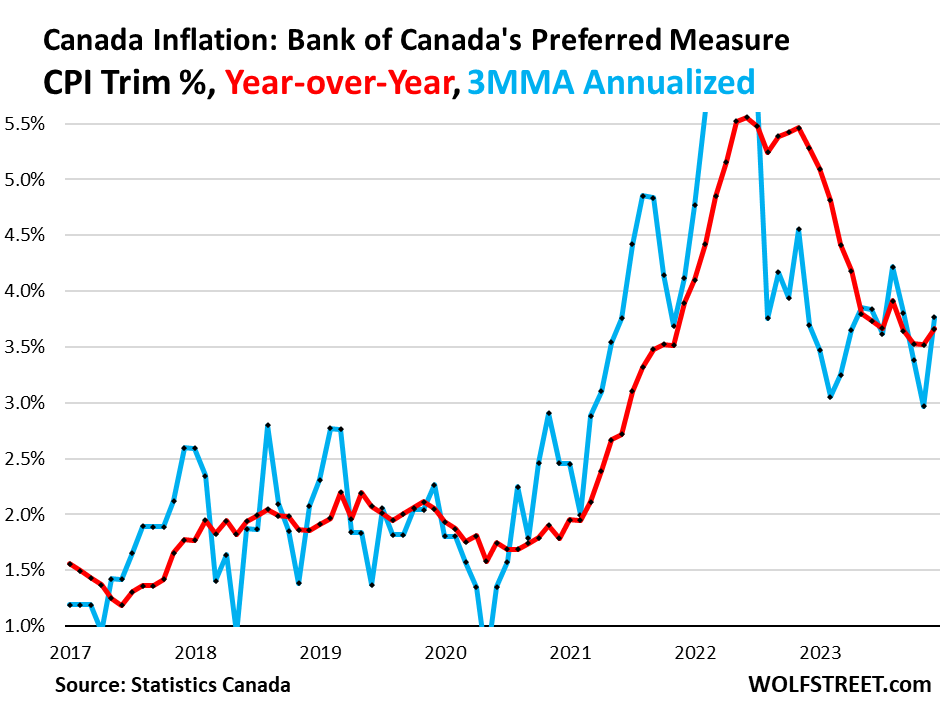
CPI median spiked by 0.38% month-to-month (4.7% annualized), the hottest since August, and the second month in a row of acceleration (up from 0.14% in October). The 3MMA annualized accelerated sharply to 3.5% (blue). Year-over-year, CPI median accelerated to 3.65% (red).
These developments tripped up the widespread expectations of further cooling of inflation.
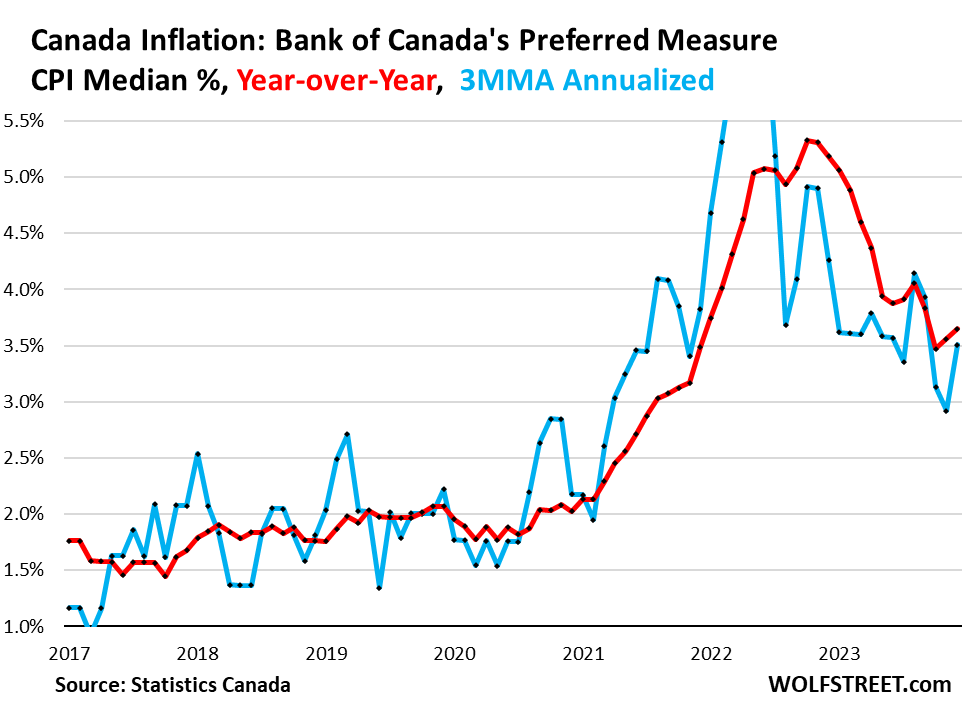
Overall inflation, core, services, housing, food, energy, durable goods.
The overall CPI has been in the same range between 3% and 4% since May 2023 and in December was back in the middle of that range. It accelerated to 0.31% in December from November, or by 3.8% annualized, the sharpest increase since August. Year-over-year, overall CPI accelerated to 3.4 (red).
Core CPI has been in the same very narrow range around 3.4% for the past four months. In December, it decelerated to 3.31% year-over-year, from 3.47% in November, and up from 3.28% in September (blue).
What this chart shows is that there hasn’t been any progress in months:
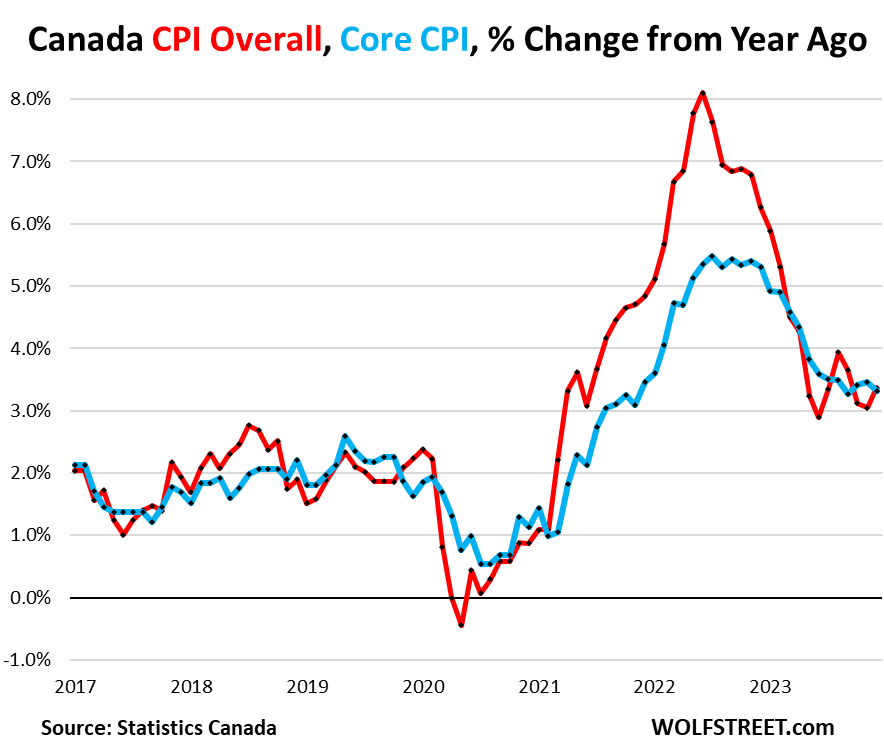
The CPI for food purchased at stores rose by 0.33% month-to-month and by 4.7% year-over-year.
In terms of price level, December’s increase pushed the index to a new record. Since February 2020, before all the stimulus craziness started, the CPI for food has surged by 23%:
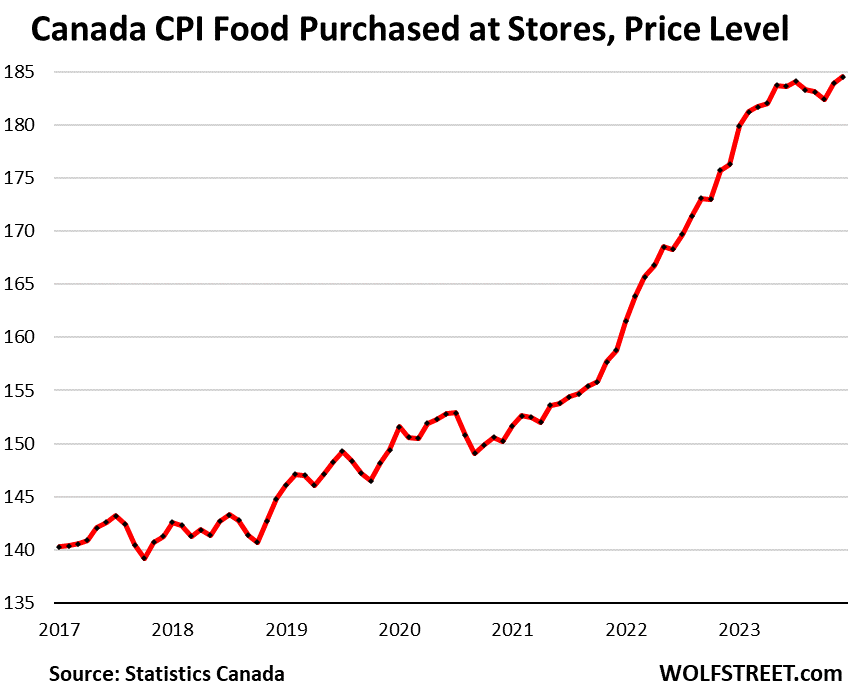
The CPI for Rent remains red hot and accelerated further. Month-to-month, rents surged by 0.74%, or by 9.2% annualized! Year-over-year, rent inflation accelerated to 7.7%, the second worst since April 1983, behind only October. The rent CPI is a measure of what tenants pay in rents.
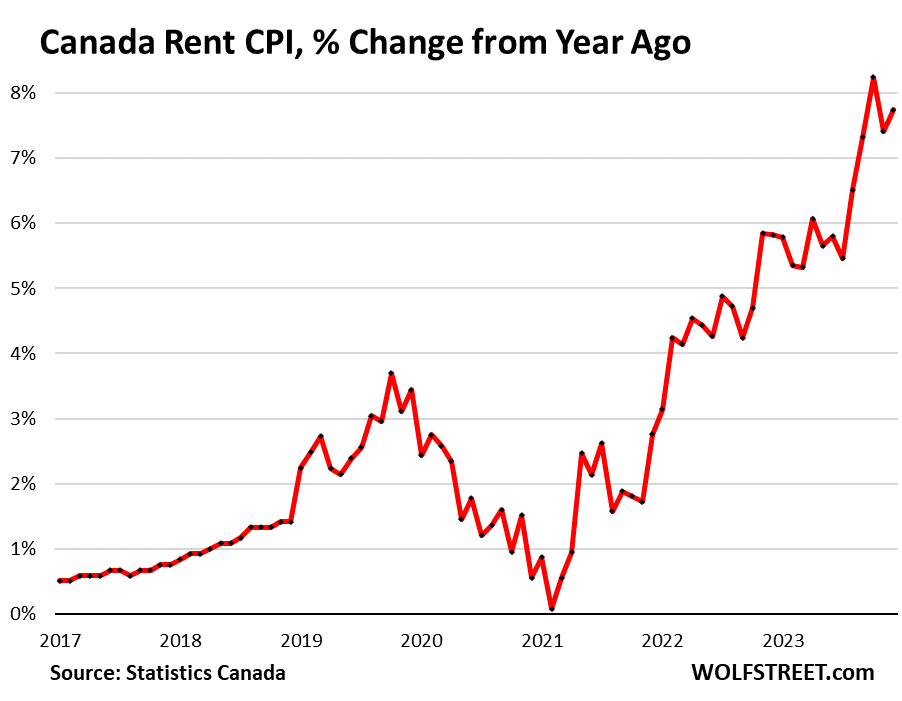
This chart shows the Rent CPI in terms of price level, not percentage change. Since February 2020, the Rent CPI increased by 17%. Over the past two years, it increased by 13.5%:
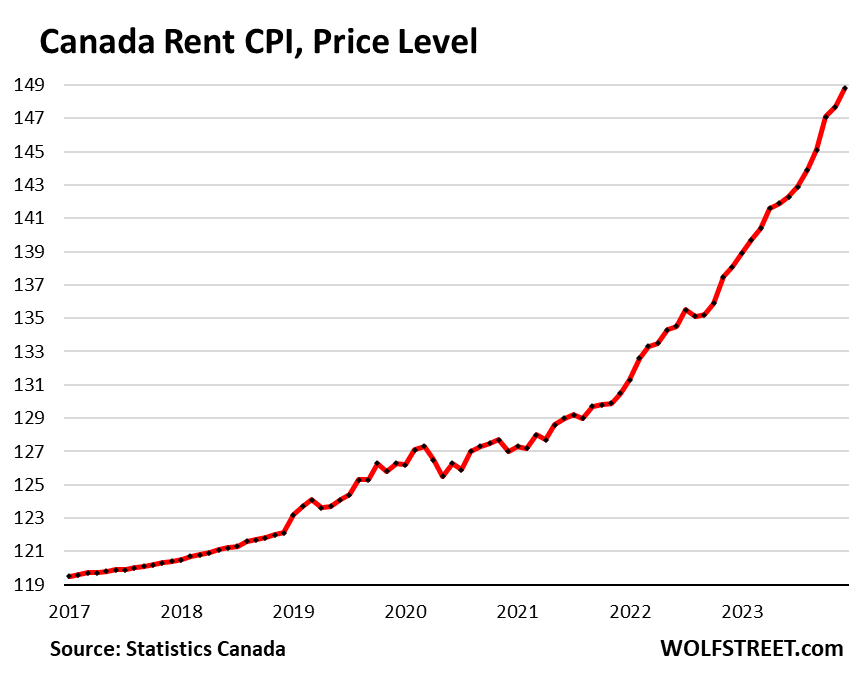
The CPI for homeownership, or “owned accommodation,” has remained roughly in the same red-hot range of 6.7%. There was a deceleration in mid-2023, but in October through December it reaccelerated at the same hot rate as a year earlier.
The index includes the following items that homeowners have to deal with (% year-over-year):
- Mortgage interest cost: +28.6%;
- Homeowners’ replacement cost (the dropping home prices): -1.5%;
- Property taxes and other special charges: +4.9%;
- Homeowners’ home and mortgage insurance: +7.4%
- Homeowners’ maintenance and repairs: +4.8%;
- Other owned accommodation expenses: +0.3%.
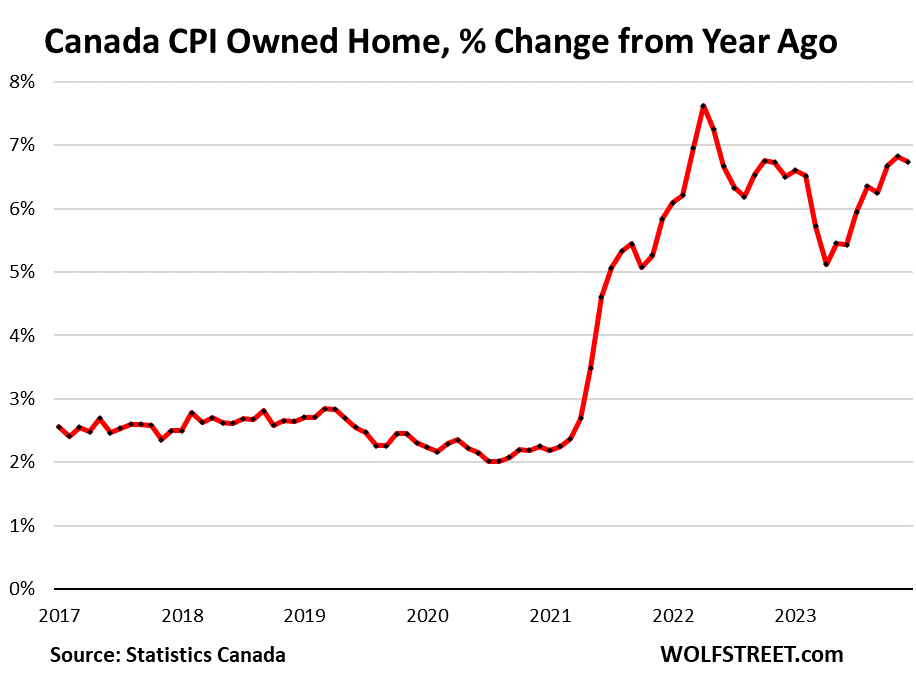
Services inflation decelerated in December to 4.3% year-over-year but hasn’t made any progress since May 2023:
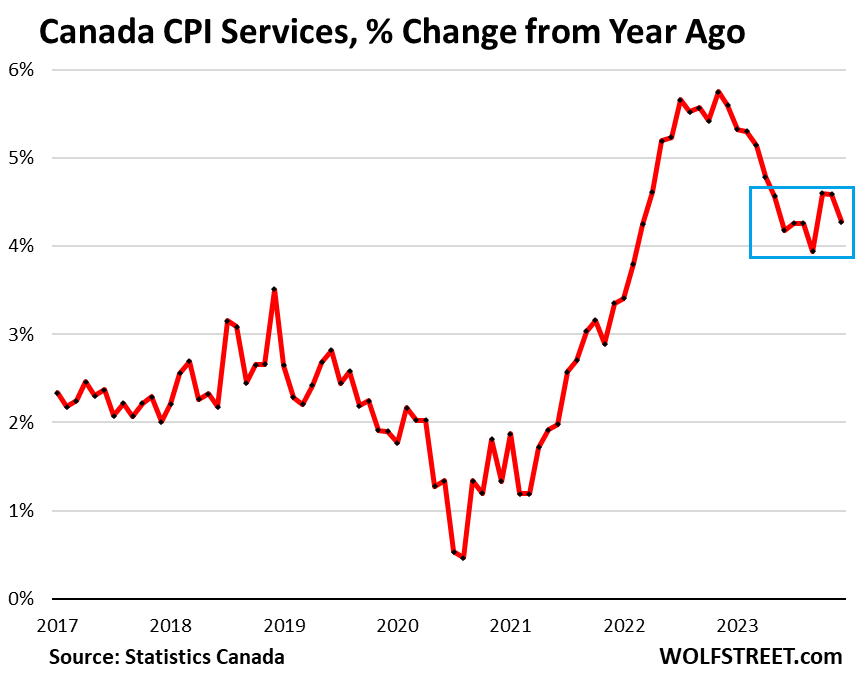
The CPI for durable goods, after the huge surge in 2021 through mid-2022, has plateaued and is inching lower. In December it declined by 0.29% for the month. Year-over-year it still increased by 1.4%. Durable goods are dominated by new and used motor vehicles:
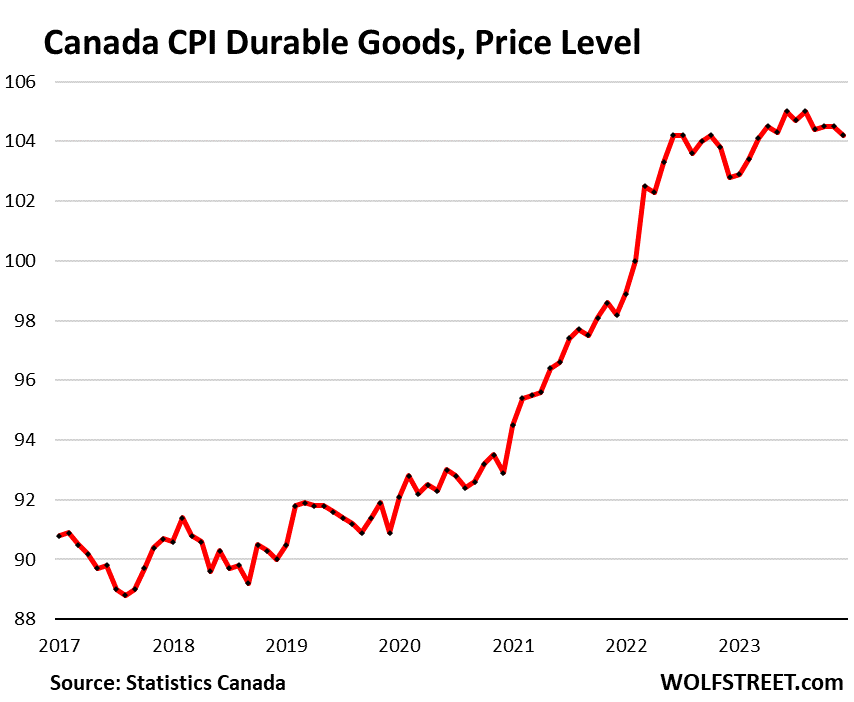
The CPI for energy dropped by 2.6% in December from November, not seasonally adjusted. The index has now worked off the entire spike since February 2022. The well-known and vexxing problem with plunging energy prices is that they cannot plunge forever.
The aggregate includes the energy products and services that consumers buy as such: gasoline, electricity, natural gas, fuel oil, heating oil, other fuels, etc.
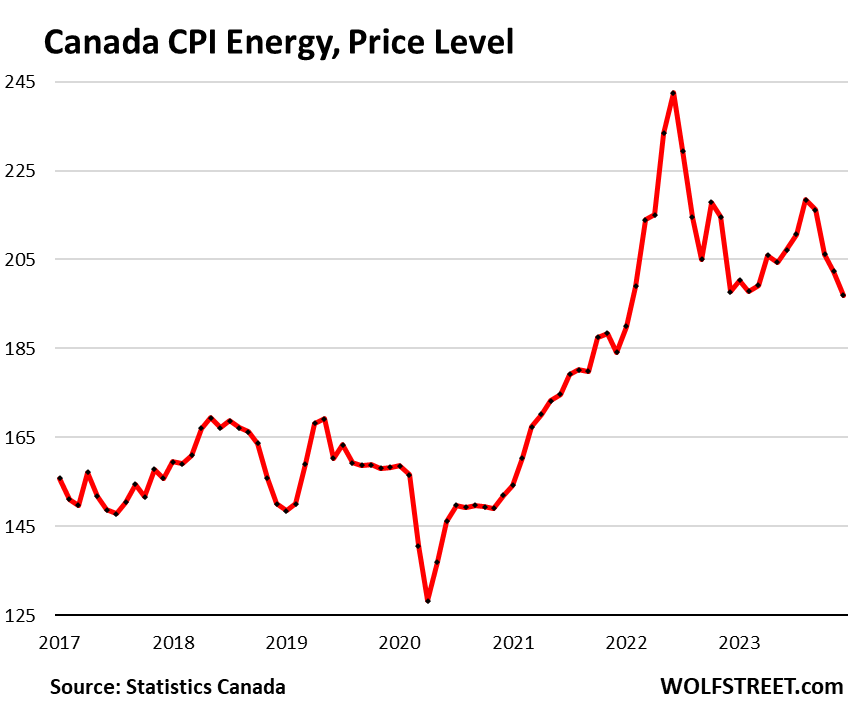
STAY INFORMED! Receive our Weekly Recap of thought provoking articles, podcasts, and radio delivered to your inbox for FREE! Sign up here for the HoweStreet.com Weekly Recap.
Wolf Richter January 16th, 2024
Posted In: Wolf Street











